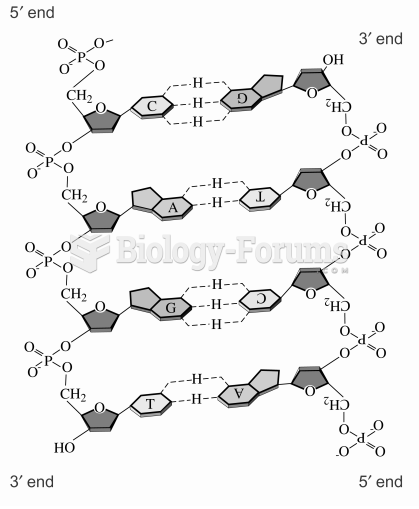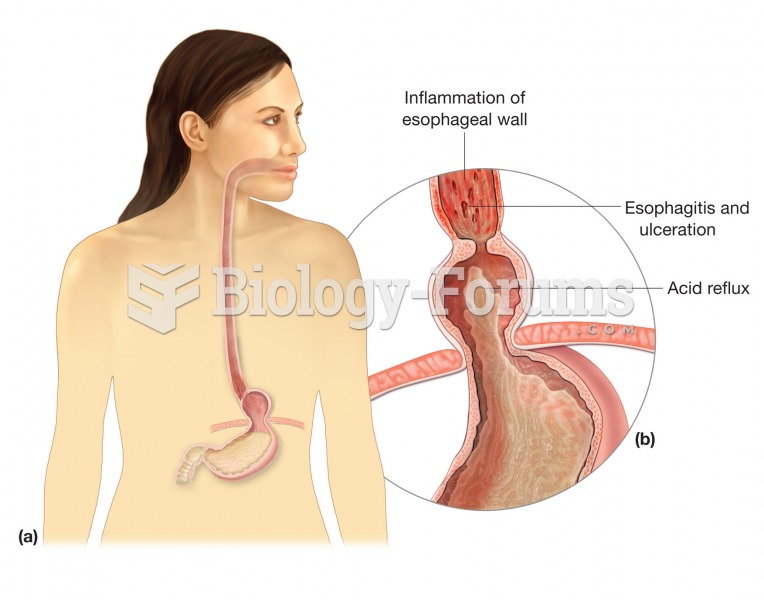Answer to Question 1
B
Answer to Question 2
Simple dominantrecessive inheritance. Many human characteristics are influenced by only one pair of genes (called alleles): one from the mother, one from the father. Although he knew nothing of genes, a 19th-century monk named Gregor Mendel contributed greatly to our knowledge of single gene-pair inheritance by cross-breeding different strains of peas and observing the outcomes. His major discovery was a predictable pattern to the way in which two alternative characteristics (for example, smooth seeds vs. wrinkled seeds, green pods vs. yellow pods) appeared in the offspring of cross-breedings.
Consider the fact that about three-fourths of us have the ability to see distant objects clearly (that is, normal vision), whereas the remaining one-fourth of us cannot and are myopic (nearsighted). The gene associated with normal vision is a dominant allele. A weaker gene resulting in nearsightedness is a recessive allele. So a person who inherits one allele for normal vision and one allele for myopia would display a phenotype of normal vision because the normal-vision gene overpowers (that is, dominates) the nearsightedness gene.
Because a normal-vision allele dominates a nearsightedness allele, we represent the normal-vision gene with a capital N and the nearsightedness gene with a lowercase n. Perhaps you can see that there are three possible genotypes for this visual characteristic: (1) two normal-vision alleles (NN), (2) two nearsightedness alleles (nn), and (3) one of each (Nn). People whose genotype for an attribute consists of two alleles of the same kind are said to be homozygous for that attribute. Thus, an NN individual is homozygous for normal vision and will pass only genes for normal vision to his or her children. An nn individual is homozygous for nearsightedness (the only way one can actually be nearsighted is to inherit two of these recessive alleles) and will pass nearsightedness genes to his or her children. Finally, an Nn individual is said to be heterozygous for this visual trait because he or she has inherited alternative forms of the allele. This person will have normal vision, because the N allele is dominant. And what kind of allele will the heterozygous person pass along to children? Either a normal-vision gene or a nearsightedness gene. Even though a heterozygous person has normal vision, exactly half the gametes produced by this individual will carry a gene for normal vision and half will carry a gene for nearsightedness.
Can two individuals with normal vision ever produce a nearsighted child? The answer is yesif each parent is heterozygous for normal vision and is a carrier of the recessive allele for nearsightedness. If a sperm bearing a normal-vision (N) allele unites with an ovum carrying a normal-vision (N) allele, the result is an NN, or a child that is homozygous for normal vision. If a sperm bearing an N gene fertilizes an ovum carrying an n gene, or if an n sperm fertilizes an N ovum, the result is a heterozygous child with normal vision. Finally, if both sperm and ovum carry an n gene, the child will be nearsighted. Because each of these four combinations is equally likely in any given mating, the odds are 1 in 4 that a child of two Nn parents will be nearsighted. This graphic representation of parents' alleles and their possible combinations to form unique inheritable traits is called a Punnett Square.
The normal-vision/nearsightedness trait is one of thousands of human attributes determined by a single gene pair in which one particular allele dominates another (Connor, 1995).







